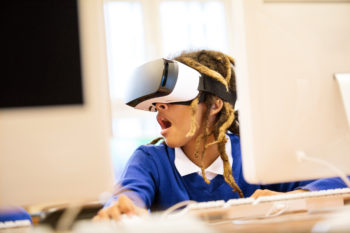In this three-part series, Challenge Works’ executive director, Tris Dyson, explores our attitudes to entrepreneurialism and education. In part one he looked at where the challenges lie, in this second part he discusses what we can do to solve them and asks whether we need to reassess the measurements of success.
In my last post I talked about the need to keep up with the pace of technological change through innovation, and that the best place to start was exposing our young people to the possibilities of entrepreneurialism in school as a means of bringing great ideas to life. While stimulating and fostering an entrepreneurial spirit is a must, how do we use these enterprising new skills productively and put innovation to good use for the benefit not only of our nation but globally too?
We are inclined to focus innovation-led conversations on economic factors and our ability to remain competitive. However, we forget the enormous societal challenges that we face both in the UK and around the world, be it climate change, obesity, overpopulation, starvation, extreme poverty, basic healthcare, or the difference access to mobile networks and the internet can make to transforming economies, the role of citizens and businesses.
Solving these global and local issues requires compassionate innovation and new ways of thinking; from creative people with the drive to solve society’s problems by harnessing the latest in digital, science, technology and innovation. This is a new type of entrepreneur – a social entrepreneur or societal innovator. The world is in desperate need of their ingenuity and to put it to good use.
It’s potentially a more attractive form of entrepreneurship for many, driven by the desire to make a positive impact and achieve lasting change rather than being focused solely on making money and profit.
Each year Nesta runs a European Social Innovation Competition, this year focused on innovative projects designed to reduce plastic waste. Both the volume and the diversity of those that entered eclipsed other Nesta innovation competitions. I suspect the reason is that people are motivated to solve frustrating problems and thereby become entrepreneurs as a side effect. This I believe is the key to getting people engaged in innovation and entrepreneurship – give them a meaningful challenge to solve.

